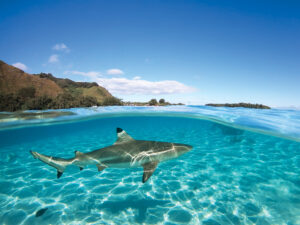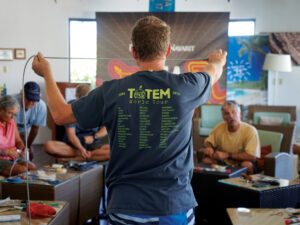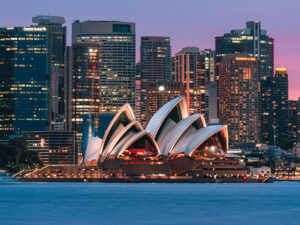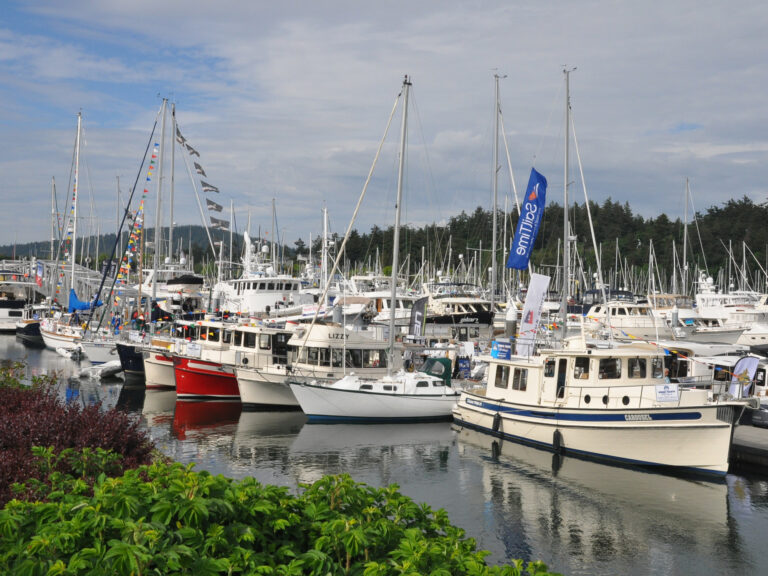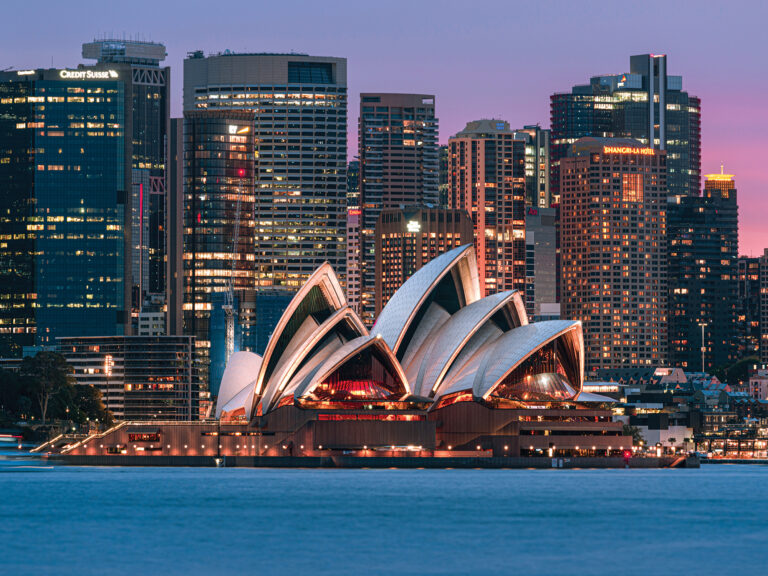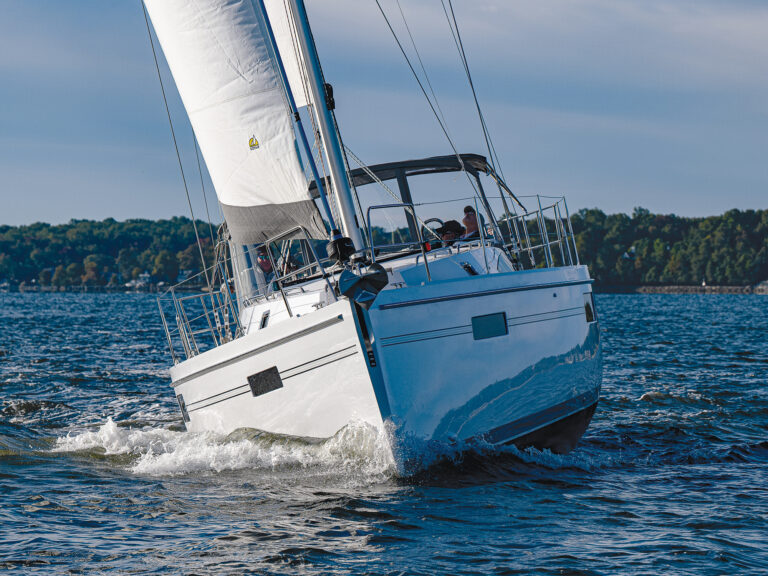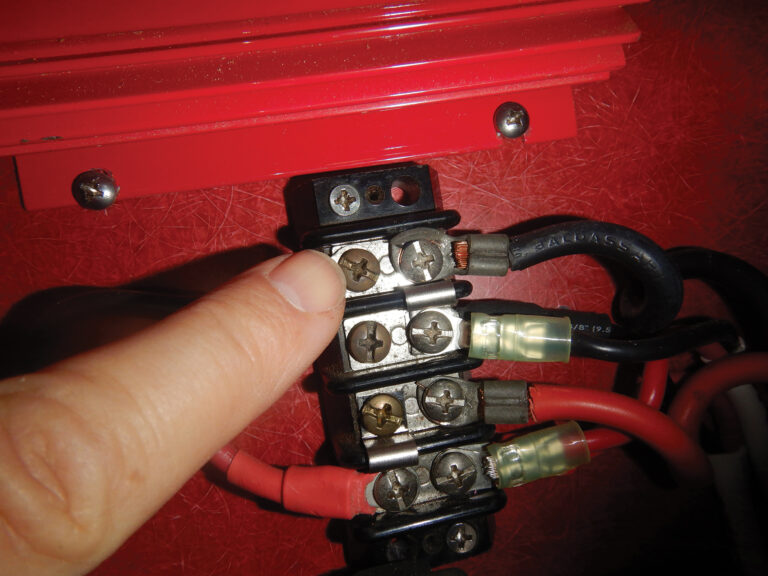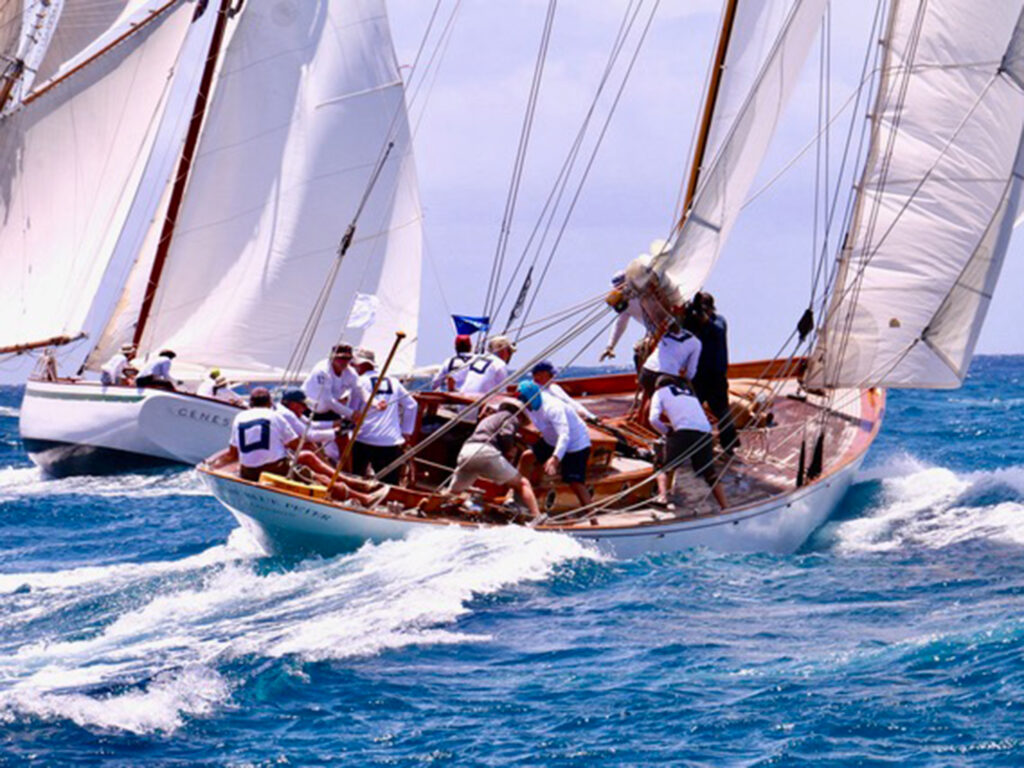
Richard Thomas and I were off Pigeon Beach in Falmouth Bay, Antigua, when we dropped the hook from his Reliance 44, Strider. I climbed into the dinghy with my sea bag and camera gear, and headed ashore to English Harbour, at the east end of the bay. We had arrived in time to join the final chapter in the 2024 Caribbean yacht racing season: the Antigua Classic Yacht Regatta and Antigua Sailing Week.
Richard was looking for a crew position on one of the classics. I was moving ashore to cover the two events. As usual, I’d be staying at Pineapple House, a cottage colony overlooking the superyacht docks at the Antigua Yacht Club. It’s a B&B in the heart of the action with the second B standing for booze.
Pineapple House’s hostess, Libby Nicholson, was whipping up a batch of punch for her late-afternoon soirée when we arrived. Libby grew up on this island, the granddaughter of Commander Vernon Edward Barling Nicholson, the chap who launched the concept of yacht chartering in 1950. Twenty years ago, Libby built a cottage for herself on a hillside overlooking Falmouth Bay. When a sailor asked to rent a room, she built more cottages. There are nine now, including the Great House and the Crew’s Quarter.
The front porch of the Great House was abuzz with guests, locals and a dozen sailors sitting on couches, on the railing, on the floor and in one another’s laps, sipping rum and chatting away. Capt. Colin Horton was there. He’s the skipper on Eros, a 115-foot classic schooner that would be racing in the regatta. Within minutes, Richard had procured himself a spot as foresail sheet trimmer on Eros. Colin signed up three additional sailors as crew, too.
This is one reason why people stay at the Crew’s Quarters at Pineapple House, with co-ed communal living for a half dozen people in twin and queen-size beds on the porch and in various alcoves. There are two shared bathrooms, an outdoor shower and a kitchen. The cottage sits on a hillside surrounded by a tropical garden where guests can pick mangoes off the trees. Larger and more private rooms increase the nightly rate from $65 to as much as $125.
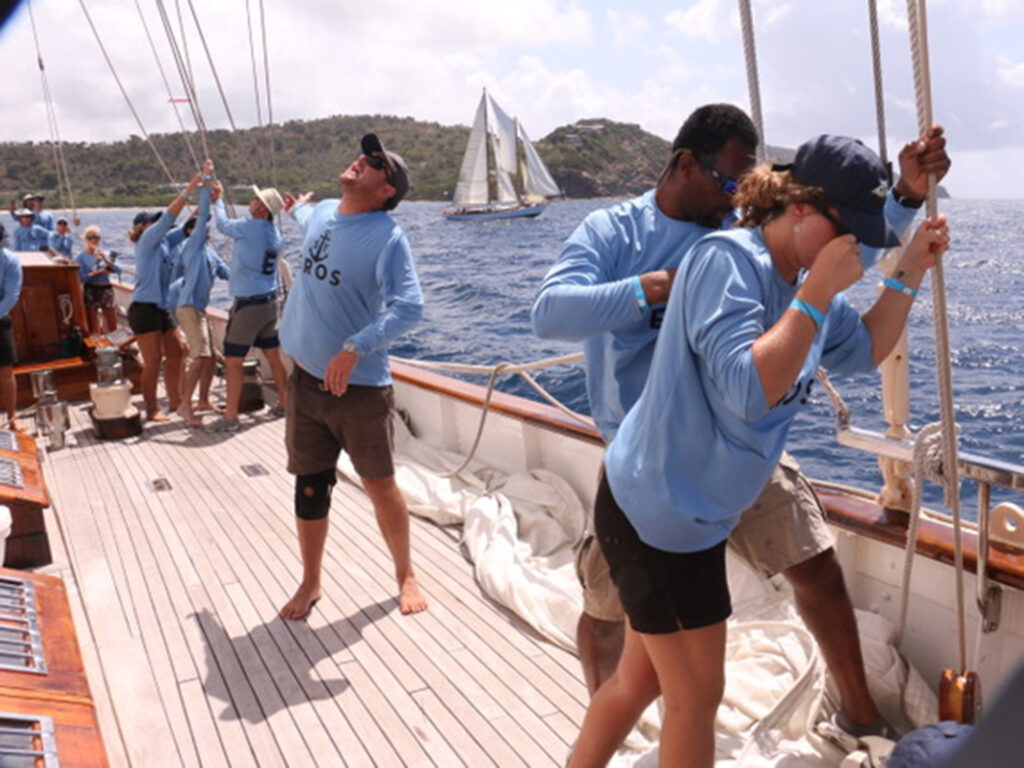
Over at Nelson’s Dockyard, a restored 1700s British naval base, things were hopping. This is where all the classic yachts were docked. Crews were assembling, sails were bent on, and extra gear was being offloaded to lighten the 80-odd sloops, ketches and schooners. There were even some West Indian wooden workboats, which sail in their own class.
These boats are the grand old ladies of bygone days, along with newer versions built in the tradition. Crews are an eclectic group of classic-boat lovers. “It not how fast you sail,” one owner told me. “It’s in what style.”
What constitutes a classic yacht for this event is a full keel with moderate to heavy displacement, built of wood or steel, and of traditional rig and appearance. Modern classics are monohulls built of any material with a modern underwater profile, such as fin keel and skeg rudder, and designed before 1988. Owners of one-off designs can also lobby the committee to join. Each of the 80- to 110-foot schooners need 10 to 20 savvy sailors to raise and trim the sails.
Owners of these yachts often return again and again for this event. One told me: “It’s the sun, the steady trade winds, the blue sky and warm, blue water that bring me back each year. This is my 12th Classic. Just being here, experiencing these elegant, well-maintained yachts, watching them power through the swells, the warm spray over the bow—what more could you ask for?”
Jane Combs, who, with her husband, Kenny, were instrumental in starting the Classic, told me a few years ago that “it’s more the boats than the race. The race is just an excuse to bring us and the boats together.” Some of the boats that people know on sight include Eros, along with the 65-foot Juno, the 72-foot Cassiopeia II, the 72-foot Ticonderga, the 74-foot Bolaro and the grand old lady, the 70-foot Galatea, built in 1899.
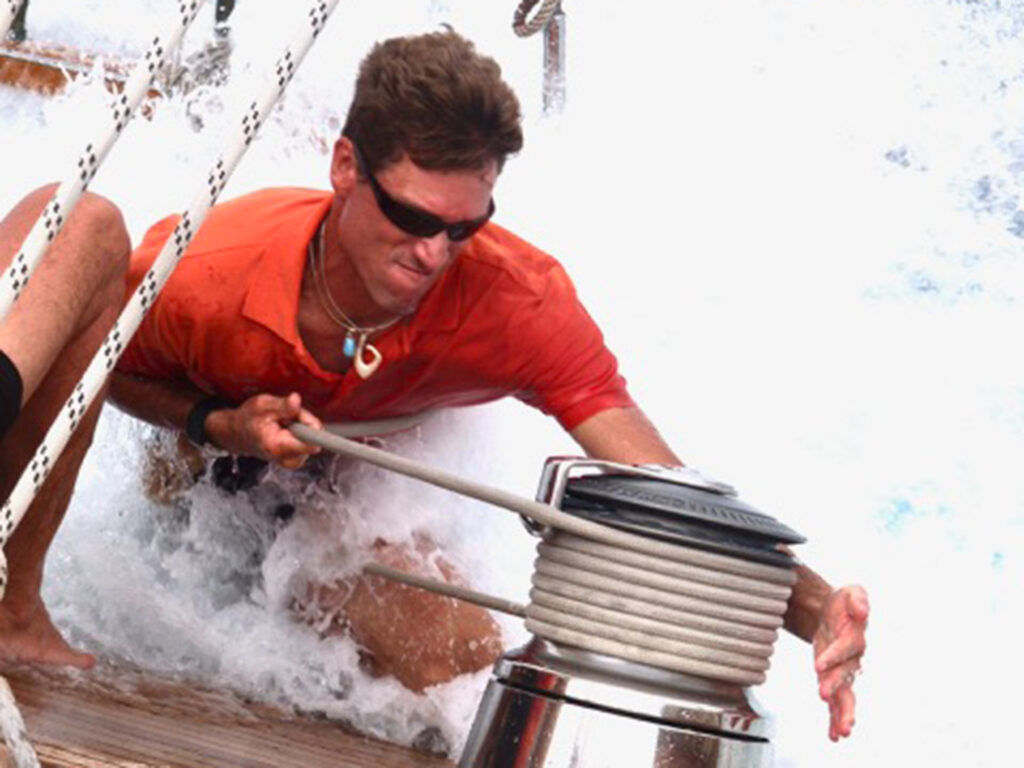
“The Classic is more laid-back, a bit more genteel,” one skipper told me. “The crews are not your gung-ho, team-bonding racer types.”
The first day of the four-day Classic includes the Concours d’Elegance. Judges step aboard each yacht to inspect the quality of the brightwork and the polish of brass, along with the marlinspike, seamanship, coiled lines and interior furnishings. Yachts that pass muster are rewarded with recognition and praise.
Most years, the first race is single-handed. Even the 100-foot-plus yachts get into the action. Crews are allowed aboard to raise the sails, and then they depart, leaving the skipper to steer, trim, tack, jibe and round the marks alone. One non-participant is allowed along for safety.
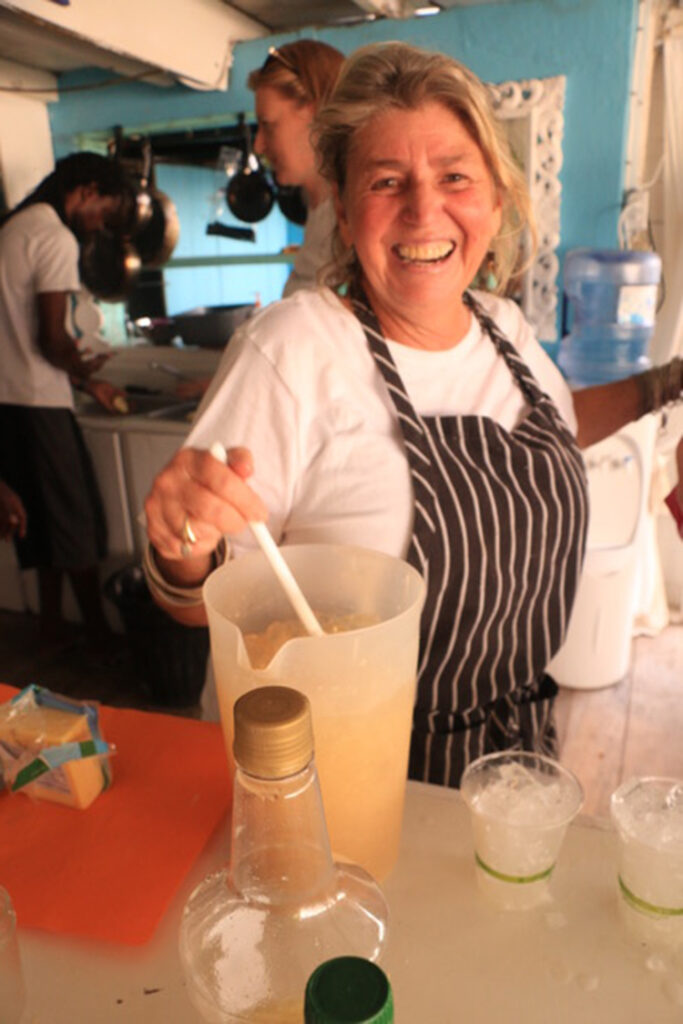
The waters off Falmouth and English Harbours are famous for predictable trade winds, blowing 15 to 20 under sunny skies with temperatures in the 80s. A few years ago, the trades were a bit boisterous, blowing closer to 30 and gusting to 35. Seas were 10 to 15 feet. No one came ashore dry. Last year, the first day of regular racing was more a drifting contest than a race, as there was little to no wind at all. But things returned to normal for the rest of the three days.
Action ashore at the end of each day’s race brings the crews together. Buckets of cold Red Stripe beer are plentiful, and English Harbour Rum, straight or with a splash of punch mix, livens up the retelling of the day’s stories and lies.
This year’s Antigua Classic begins April 16. The last day of racing and the Parade of Classics before the crowds at the Dockyard is scheduled for April 20. The following Monday is devoted to fun and games: a gig race in the inner harbor, a traditional English cream tea lawn party, prize-giving, dinner, music and dancing. Then, the classic fleet will pack up and head north, while the fleet of go-fast racing sleds begins to arrive.
Antigua Sailing Week
Antigua Sailing Week got started in the 1960s. It began as an informal competition among the charter schooners based in English Harbour. At first, it was a race down to Deshaies, on Guadeloupe, a beach party that night, and a race back to English Harbour the next day. These days, boats and crew come from around the world to join this six-day regatta.
There are five days of flat-out racing with a midweek lay day when crews compete in beach games and chill. There are a dozen divisions, all under Caribbean Sailing Association rules. Some people charter a standard bareboat and join in alongside the kitted-out boats with carbon sails and spinnakers.
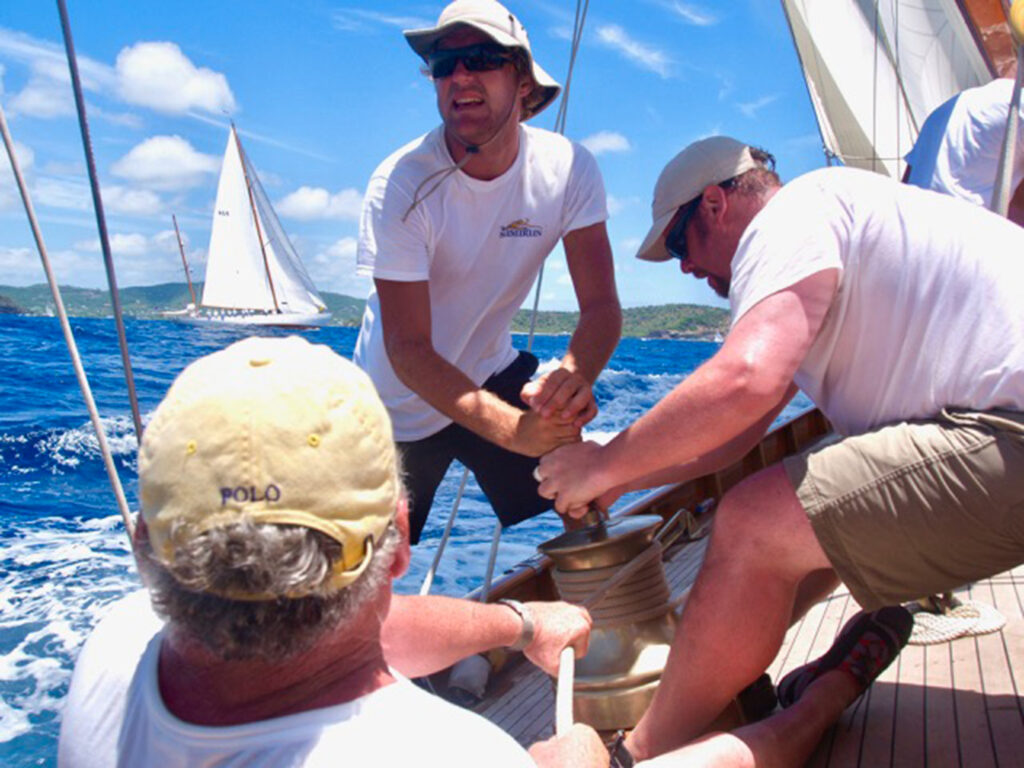
This year, there will also be a Cruising Rally for liveaboards and bareboat charterers who want to have fun without the demands of competition. Each day will bring a different beach, cove or anchorage where cruisers can gather for a raft-up, shoreside activities and a potluck on the beach.
This year’s regatta begins on April 26 and runs for six days, wrapping on May 2 after five days of racing in a dozen classes over two different courses.
I can hardly wait.

